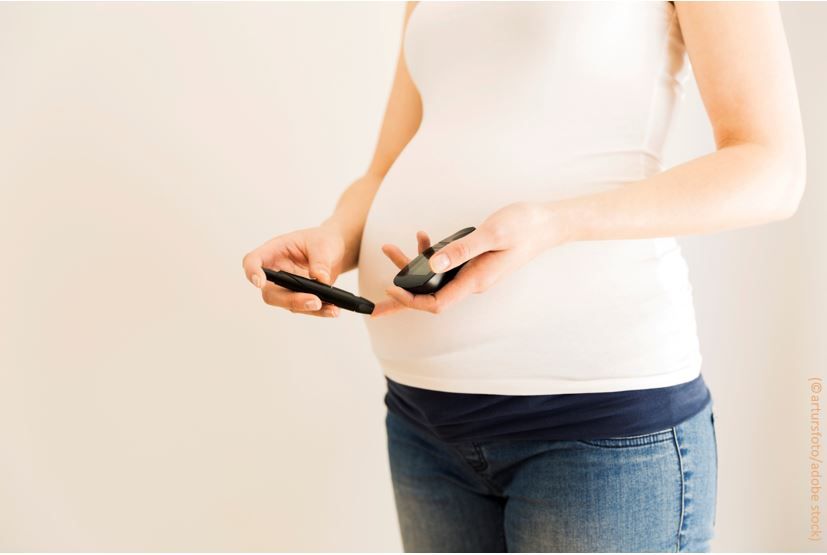Preconception Prediabetes Ups Risk for Poor Pregnancy Outcomes in Young Women: New Data
The risk of gestational diabetes was 2-fold greater among young women with prediabetes before conceiving compared with those who had normoglycemia.
©arturfoto/stock.adobe.com

Hemoglobin A1c (HbA1c) levels in the prediabetes range prior to conception may double the risk of gestational diabetes in young women giving birth for the first time, according to findings of a new retrospective cohort study. Among more than 14 000 adolescents and young adults aged 10 to 24 years in New York City (NYC), preconception prediabetes was also associated with an 18% increased risk for hypertensive disorders of pregnancy and preterm delivery.
The results suggest that cardiometabolic health should be prioritized from an early age to help reduce the risk of adverse pregnancy outcomes, first author Katharine J McCarthy, PhD, MPH, assistant professor in the department of population health science and policy and the department of obstetrics, gynecology and reproductive science at the Icahn School of Medicine at Mount Sinai in New York, and colleagues wrote in JAMA Network Open.
“This study adds to the scant literature on the validity of using subclinical HbA1c levels in adolescence and young adulthood to detect risk for cardiometabolic complications in pregnancy,” investigators said. “Given alarming trends in adolescent obesity and diabetes risk and the high prevalence of unplanned pregnancies in adolescence and young adulthood, our results support expanded preconception screening as a mechanism to intervene on excess cardiometabolic risk earlier in the life course.” HbA1c, the team emphasized, is a modifiable risk factor.
“Given alarming trends in adolescent obesity and diabetes risk and the high prevalence of unplanned pregnancies in adolescence and young adulthood, our results support expanded preconception screening as a mechanism to intervene on excess cardiometabolic risk earlier in the life course.”
For their research, McCarthy and colleagues tapped linked birth registry, hospital discharge and NYC Department of Health A1c Registry data from 2009 to 2017 for girls and young women aged 10 to 14 years. Study inclusion required at least one HbA1c measurement prior to a first pregnancy and no prior record of diabetes or an HbA1c value equal to or greater than 6.5%. For the analysis, an HbA1c value before conception of 5.6% or less was defined as normoglycemia and an HbA1c of of 5.7% to less than 6.5% as prediabetes.
The primary outcome for the study was gestational diabetes at first birth. For secondary outcomes, McCarthy et al recorded rates of additional indicators of cardiometabolic dysfunction during pregnancy including hypertensive disorders of pregnancy, preterm birth, cesarean delivery, and macrosomia, according to the study.
FINDINGS
The final cohort of 14 302 had a mean age of 22.1 years; 41% self-identified as Hispanic, 29% as Black, 18.1% as White, and 10.6% as Asian. Stratified by age, the majority (93.8%) were aged 20 to 24 years, and 6.2% were between age 10 and 19 years.
Before pregnancy, the researchers reported, more than three-quarters of the women (79.7%) were classified as having normoglycemia and 20.2% had HbA1c in the prediabetes range. After they had adjusted for prepregnancy characteristics, McCarthy and colleagues found that the women with preconception prediabetes had an adjusted relative risk (aRR) of 2.21 (95% CI, 1.91 -2.56) for gestational diabetes compared with women who had normoglycemia before pregnancy. The risk of 2 of the secondary study outcomes was also higher among the adolescent and young adult women with prediabetes before pregnancy than those who were normoglycemic:
- Hypertensive disorders of pregnancy (aRR, 1.18; 95% CI, 1.03-1.35)
- Preterm delivery (aRR, 1.18; 95% CI, 1.02-1.37)
The final analysis showed that the likelihoods of cesarean delivery (aRR, 1.09; 95% CI, 0.99-1.20) and macrosomia (aRR, 1.13; 95% CI, 0.93-1.37) while slightly increased for participants with preconception prediabetes vs those with normoglycemia did not reach statistical significance.
The optimal threshold for HbA1c prediabetes to identify the association with cardiometabolic-related complications in pregnancy in both adolescence and young adulthood has yet to be well characterized, investigators wrote, pointing out that that HbA1c validation studies among pediatric populations have used thresholds extrapolated from adults. Their analysis identified an HbA1c of 5.6%, compared with the current adult threshold of 5.7%, as an optimal cutoff to identify gestational diabetes among adolescents and young adults. Using 5.6% was associated with a sensitivity of 52% and specificity of 70.4%, according to the study. McCarthy et al found the risk of gestational diabetes using the lower value was similar to the primary finding, ie, more than 2 times greater for those with preconception prediabetes vs those with normoglycemia (aRR, 2.14; 95% CI, 1.86-2.46).
Among the study’s limitations McCarthy and colleagues point to the absence of information on participants’ lifestyle or other factors that could have influenced glycemia or reasons for having an HbA1c test. Importantly, the study cohort was drawn from a population more likely to reflect established risk criteria and so findings should not be broadly generalized.
Those comments notwithstanding, the authors reiterate their findings and the opportunity they represent: “We found adolescent and young adult preconception HbA1c levels within a prediabetes risk threshold of HbA1c greater than or equal to 5.6% to less than 6.5% is a potentially modifiable risk factor that can be targeted for reducing the likelihood of gestational diabetes and adverse maternal and neonatal outcomes at first birth,” they concluded.